|
The Caribbean American Heritage Awards is a celebration of excellence. Now in its 27th year, this event is the brainchild of the Institute of Caribbean and Studies and was conceptualised to pay homage to members of the Caribbean diaspora who have made remarkable strides in their respective fields and enjoy success at a regional and international level. In a statement posted on the CARAH Awards website, organisers said the ICS started this event in 1994 to highlight to the American society at large, the "calibre of individuals that claimed Caribbean American ancestry and to provide a forum for honouring and recognizing their contributions to America and the world." Given the rising anti-immigrant rhetoric, ICS said the awards are still relevant and just as important today. One of the 2020 recipients is our own: Andrea McKenzie, Trinidad and Tobago (Vanguard Award) The talented artist attributes her natural knack for creativity to her family's respected creative legacy. Throughout her young career, she has already exhibited works across the Caribbean, New York, Washington DC, Philadelphia and Australia. Andrea also had the opportunity to display her work at the BET network Twenties Tv Series showcase for producer Lena Waithe. She has collaborated with various celebrities including Akon & actress Sydney Sweeney from the award-winning HBO series Euphoria. Her work has also been featured at celebrity auctions. Andrea is also the winner of the “Black I AM Power, Art and Creativity Award” 2019 in Atlanta and feeling very indifferent toward studying it. Now, he holds a doctoral degree in music performance and is employed with the Department of Education in the U.S. Virgin Islands and the University of the Virgin Islands. Here, Dr. Robertson tells us how indifference changed to passion and why he chose to become a musical arts educator: - My parents exposed me to various types of music from a very young age. When I was seven years old, I began playing close attention to various styles, especially classical and local music. But, throughout my childhood and early teens, I still went through moments of disinterest and indifference. My teachers, however, kept reminding me that I had “great talent and potential” so I made music a serious part of my life. I completed the practical examinations with the Associated Boards of Royal Schools of Music, while being a part of what was then the St. Augustine Chamber Orchestra (later the Trinidad and Tobago Youth Philharmonic). I played Double Bass. The director of this orchestra, Kenneth Listhrop, taught me in primary school. He figured I would be a good fit for what he was trying to build. I started playing with this orchestra late in secondary school and into my years at The UWI, St. Augustine. But for years, I did not have formal music training. A lot of what I learned, I did through trial and error. I also spent a lot of the time learning from method books and DVDs. The vision for how I saw myself in this field became clearer Every July and August, I was able to receive some tutoring thanks to a collaboration between the youth orchestra and El Sistema musicians from Venezuela. When the University of Trinidad and Tobago (UTT) was formed, I received consistent and very thorough guidance from my teacher at the Academy for Performing Arts. I was also fortunate to have played with the Aragua Youth Orchestra in Venezuela. With the tutelage, encouragement and renewed love for the study of music, I decided to pursue a Master’s Degree from Florida International University followed by a doctoral degree at the University of Miami. During my years as a doctoral student, I received a fellowship to play with the Henry Mancini Institute Orchestra, the resident and very progressive orchestra of the University of Miami. At that time, I was performing with the Miami Symphony Orchestra and Sunrise Pops Orchestra. I also taught young people who came from various walks of life. While I have always enjoyed learning and playing my instrument, I always felt it would be better to merge my experience as an educator and a musician to make more valuable contributions and not to limit myself to just one area. “Being able to make a difference in the lives of young people” After receiving my doctoral degree, I got a job with the Department of Education in the U.S. Virgin Islands as well as the University of the Virgin Islands. I continued playing, merging my love for music with my desire to impart knowledge and teach others. Most recently, I was part of a collaboration with musicians from the Virgin Islands and Puerto Rico. Being able to make a difference in the lives of young people, as well as continuing to play in various settings, have kept me on this path. "Despite some trepidation, the support that I had, aided in my navigation of this musical arena" As I look back on my professional and personal journey, I experienced many moments of nervousness as I was entering a field not often explored in Trinidad and Tobago. There were few classical double bass players in the Caribbean and even fewer resources. I also had little experience performing in any orchestra setting. This is why, I will never forget the many interactions that I had with various teachers and mentors along this journey. I am indebted to people like Kenneth Listhrop, Javier Viloria, Caitlyn Kamminga, Luis Gomez-Imbert and Brian Powell for the role they played. These are just a handful of the people whom I encountered and recognized my talent at various points of this journey. They did a lot to guide and nurture my skills and maximize my potential. Despite some trepidation, the support that I had, helped me to navigate this arena. My family has also been extremely supportive throughout this journey and their foresight and individual passion, helped lay the foundation for my musical performance and education career. “The Caribbean has a lot of upstanding leaders in various arenas” We need more role models for black men but what must also be implemented are additional initiatives to nurture and encourage those in the creative sector, especially in the orchestral world. In general, the Caribbean is filled with individuals who have proven to be upstanding leaders in various arenas, including music. These individuals, though imperfect, have done quite a lot of good. Black men especially could learn from all aspects of their experiences. Globally, people are encouraging more black people to join musical arts. Initiatives such as the Sphinx Organization in the USA and Chineke! Orchestra in the UK have surely highlighted the need to have more people of colour in orchestras. Many universities also recognize the importance of exposing people from diverse backgrounds to orchestral music making. As a result, they have created after school programmes which give students the opportunity to learn music with which they may not be as familiar. While there is still a lot more work that needs to be done, I am hopeful that the work that has been geared specifically toward the empowerment of black men, will continue to bear positive results. The onus is on those who have done the work in earlier years, to continue to carve viable paths for the younger ones to follow. I hope that I can continue to play my part. “Music and performing arts have evolved tremendously over the years” Young men therefore should be encouraged to explore as many areas as possible. Young men have talents that they may not be aware of. Providing them with as many reasonable options as possible, may allow young men to consider less traditional career paths. Music and the performing arts have evolved tremendously over the years and it is much easier to find specific areas that may be of interest to men. These areas could include performance, education, research, music production, technology, and much more. Regardless of the area, the arts provide opportunities where people can communicate a wide range of ideas, technical approaches and emotional ranges. All involved, stand to greatly benefit. - In addition to his master’s and doctoral degrees in music, Harley also holds a Bachelor’s degree in Literatures in English, Linguistics and Communication Studies from University of the West Indies, St. Augustine Campus, Trinidad and an Artist Diploma in Music Performance from UTT - The University of Trinidad and Tobago St. George's College, Barataria, Trinidad and Tobago. University of the Virgin Islands Source: MENtions-Stories About Us, October 2020.
 Concept render of Cape Class Patrol Boat for Trinidad and Tobago Coast Guard (Image courtesy Austal) The Ministry of National Security has confirmed that Australian shipbuilder, Austal Limited, has launched the first of two Trinidad and Tobago Coast Guard (TTCG) Cape Class vessel into the water.
The vessels are intended to enhance the border protection capabilities of the country in conjunction with the existing Coast Guard fleet. In a news release issued this morning, Minister of National Security, Stuart Young, MP stated: “This launch is a significant step, bringing us closer to taking delivery of these naval assets for our Coast Guard. We look forward to the continued progress in the journey of getting these assets to Trinidad and Tobago.” Designed and built by Austal, the Cape Class is a 58-metre all aluminium monohull patrol boat, specifically produced to combat the full range of maritime security threats. According to Austal, the vessel has a long 4,000 nautical mile range and 28-day patrol cycle, with a crew of up to 22 persons. The vessel also supports two high speed 7.3 metre Rigid Hull Inflatable Boats used for intercepting other vessels. Back in 2018, experts from the TTCG, including the Chief of Defence Staff, had spent a week in Australia observing and testing the Austal Cape Class Vessels, with the assistance of the Royal Australian Navy (RAN). The TT Delegation subsequently recommended that Government consider purchasing that type of vessel, which would be suitable to work in the waters of Trinidad and Tobago, and also could be integrated with the six (6) Austal vessels and the Damon vessels owned by the Coast Guard. In 2019, Austal was awarded the contract to build the two patrol vessels for this country. The TT Government had requested that the purchase be supported by a financing package (the Defence Export Facility) through Export Finance Australia (EFA)—which had been approved and announced in December 2018. Austal then began construction on the vessels with a metal cutting ceremony at the Company’s Henderson shipyard on 8 April 2019. That ceremony was attended by Captain Douglas Archer representing the GORTT Coast Guard and Australian Defence Export Advocate, the Hon. David Johnston. https://guardian.co.tt/.../austal-launches-first-ttcg. 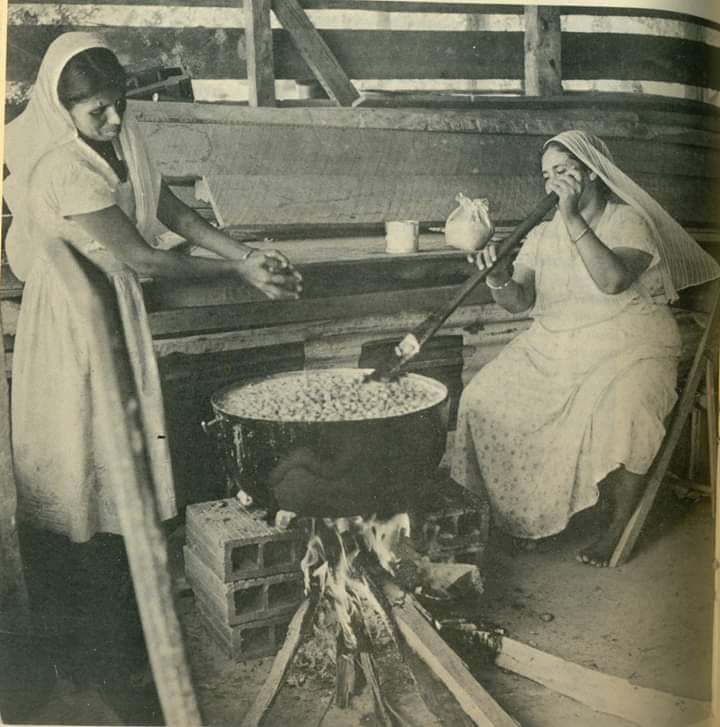 The black and white photos are of women of East Indian descent preparing food for some special occasion in the 1950s There is no immigrant story that comes without some painful recollections. It is a testimony however to the spirit of ALL Trinbagonians, that we have managed to grow beyond recriminations and become a more unified people despite the will of divisive elements such as politicians and pseudo-religious leaders. It seems odd now in a society that counts doubles as a staple food, and where roti has almost epicurean status in some places, that the derision of the Indo-Trinidadians and their food was once commonplace. One of the first articles I wrote for this newspaper back in 2012, was on the roots of Indo-Trinidadian gastronomy which is anchored firmly in the rations which the labourers received during their contracted residences on the sugar plantations of the island. Though the provisions were sometimes augmented or differed according to the estate, the general issue was as Charles Kingsley described it in 1870: “Till the last two years the new comers received their wages entirely in money. But it was found better to give them for the first year (and now for the two first years) part payment in daily rations : a pound of rice, 4 oz. of dholl, a kind of pea, an oz. of coco-nut oil, or ghee, and 2 oz. of sugar to each adult ; and half the same to each child between five and ten years old.” The variations would usually be the addition of a small quantity of saltfish, dried pepper or potatoes. Eked out by provision gardens, often planted with crops brought from India as seeds in the ‘jahaji’ bundles of the labourers, it laid the foundation of a spicy food culture which is as different from anything produced in India today. Those who have dined on authentic Indian dishes will attest to the immense difference from the deliciously creolized creations of Trinidad. Diversification of the Indo-Trinidadian palate came about in the 1880s when many shopkeepers realized what was necessary to attract a clientele from this ethnic group. Wholesalers began to import a variety of spices and curry ground with a ‘sil and loorha’ became more commonplace. Large quantities of ghee, channa (chickpeas). Essentials like mustard oil began to make their appearance at both rural and urban grocers. Nevertheless, Indo-Trinidadian cooking remained an ‘underground’ scene, unknown to most other ethnic groups and rarely tasted outside of the mud huts where it was prepared unless one was invited as a guest. Tempting talkarees, rotis and meetai (sweets) churned out in the aromatic smoke of an earthen chulha (fireplace) were a well-kept secret, not by dint of cultural isolation alone, but also because of a growing sense of shame and self-loathing. Indo-Trinidadian children who attended government schools or schools operated by denominations other than the Canadian Presbyterian Mission to the Indians (CMI) were ridiculed for the lunches they carried, usually sada roti and some sort of bhagi or talkaree. It inculcated a massive inferiority complex which many carried into adulthood. This is well-remembered by persons today and finds its way into Caribbean literature such as the works of Sir V.S Naipaul and Ismith Khan. Well through the 1930s, Indo-Trinidadian concoctions was looked down upon as ‘hog food’ or fit only for the poorest classes. In a calypso sung by the Roaring Lion, he noted the cheapness of the diet by the chorus: “Though depression is in Trinidad, maintaining a wife isn’t very hard, Well you need no ham nor biscuit or bread for there are ways they can be easily fed, like the coolies on bargee, pelauri dhal-bat and dhal-pouri , channa, paratha and the aloo-ke-talkaree” Even doubles at its genesis in the hands of Enamool Deen in Princes Town was viewed as lowly stuff, unfit for consumption by all but rumshop drunks and hungry schoolchildren. In a memoir written by his son, Badru Deen, the struggle to introduce doubles to the urban consumer in San Juan and Port of Spain is well documented. It would be many decades before Trinidad’s most celebrated street food found a place in the national palate. As a fast food, roti was almost non-existent in the towns like Port-of-Spain where it only began to appear in the 1940s during World War II. Roadside roti-stalls were set up with all the necessary utensils, including several coal-pots, churning out dhalpouri with fillings of curried beef (ironic and at once immensely popular), goat, and curried aloo. Chicken a more expensive option. Some rumshops owned by Indians served roti as well. It is a long and stony road that Indo-Trinidadian cuisine has travelled to gain the universal acceptance it enjoys today. Source: Virtual Museum of Trinidad & Tobago, Nov. 13, 2020. On November 18, 2020, Dennis Spangalang Hall was honoured by the naming of the street to enter Skinner Park after him. Source: Naigum Joseph, FB post
The pivotal role played by British-Trinidadian journalist and activist Claudia Jones in launching the world’s largest street festival, the Notting Hill Carnival, is the focus of a new Canada-UK co-production.
Leading the production is acclaimed Canadian director Frances-Anne Solomon (Hero: Inspired by the Extraordinary Life and Times of Mr. Ulric Cross). The film will be produced by Solomon’s CaribbeanTales Media Group (CTMG), in partnership with Nadine Marsh-Edwards’ UK-Based Greenacre Films and Lisa Wickham’s Trinidad and Tobago-based Imagine Media International Limited. Set in London in 1958 as violent race riots ravaged the country, CLAUDIA tells the story of Jones, a Trinidad-born activist deported to England from McCarthyite USA, who comes up with an ingenious plan to unite Britain’s Black and white working classes. “Claudia was a modern day superhero rooted in the real world, whose remarkable life and achievements straddled the USA, England and the Caribbean.” says Solomon. “I could not be more excited to work with this global team of accomplished Black women to tell this inspiring story.” “Greenacre Films is proud to partner with Frances-Anne and CaribbeanTales to tell the story of a remarkable Black woman whose achievements helped to shape the London we live in today,” says Marsh-Edwards, whose many acclaimed productions include Been So Long, starring Michaela Cole. Imagine Media’s CEO Lisa Wickham believes that, “Frances-Anne’s film shines a much-deserved light on a Caribbean-born woman whose rich and beautiful legacy amplifies Black voices and experiences as a whole.” Joining the team as co-creator and co-writer is British actress, writer and director Adjoa Andoh (Bridgerton, Dr. Who, Invictus) and rising British screenwriter Omari McCarthy. “Claudia’s work promoting women’s rights, Black rights and the rights of the poor and disenfranchised laid the seeds for so much that followed – African and Caribbean independence, civil rights, Pan Africanism and inevitably, today’s Black Lives Matter movement,” adds Adjoa Andoh. CLAUDIA’s development has been funded by Telefilm Canada. The project is one of thirteen (13) films selected for the Attagurl Program, a unique year-long lab supporting the development and distribution paths of amazing projects by women and non-binary around the world. Source: Caribbean Riddims, Nov 9, 2020 My Trinidad - Yesterday, Today and Tomorrow
The project is a monthly, online literary magazine about our homeland and birthplace, Trinidad, what it was or where we came from, what it is and where it is heading or what it will be, especially if we don't help to influence the future of our country. No politics, no taking sides, but our country's best interests in the present and the long term. This is nostalgia as well as wishful thinking. It is yesterday, today and tomorrow. It is us. It is we. We Trinidad. Slick on the link, or copy and post into your browser. www.mytrinidad.net |
T&T news blogThe intent of this blog is to bring some news from home and other fun items. If you enjoy what you read, please leave us a comment.. Archives
December 2020
Categories
All
|
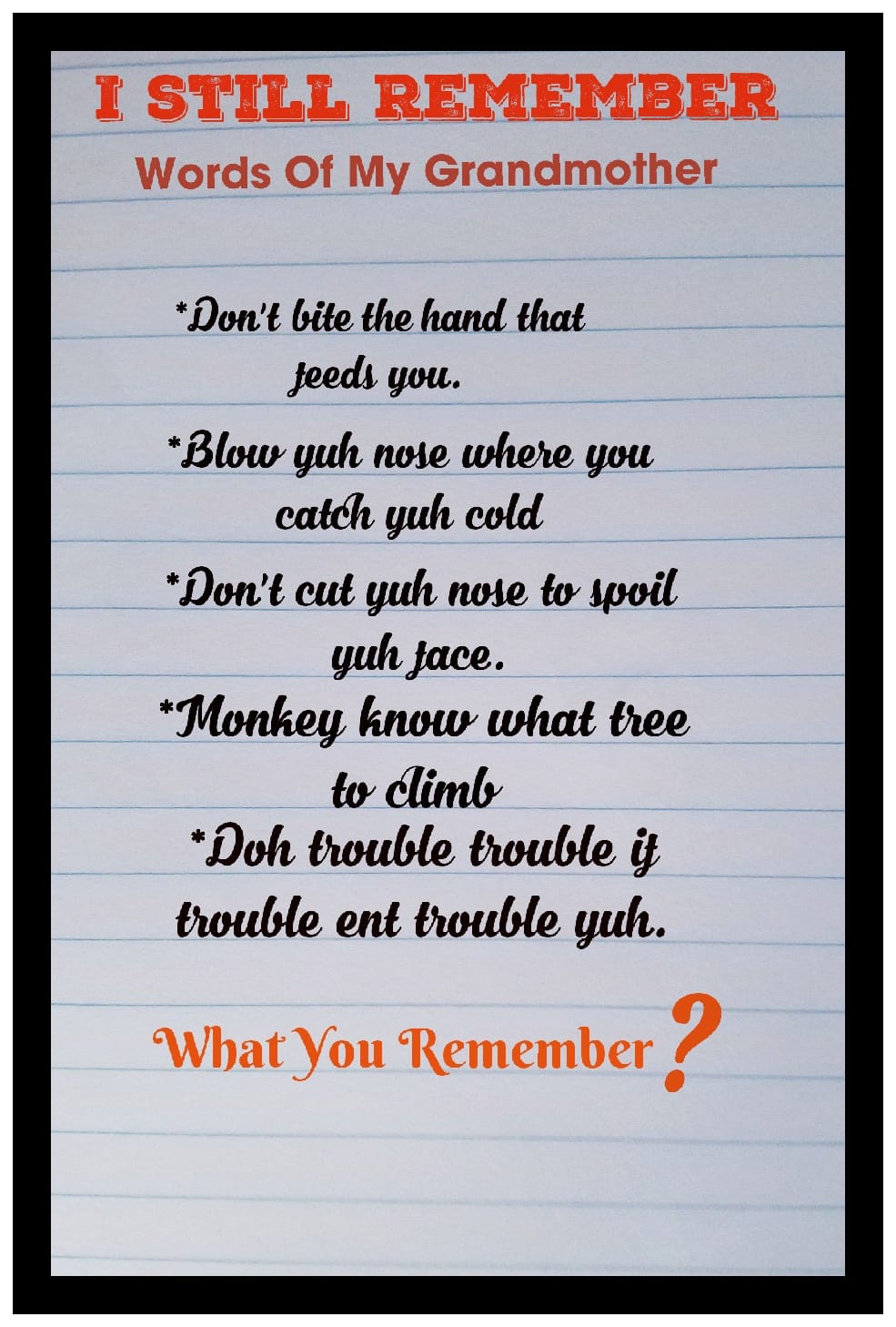


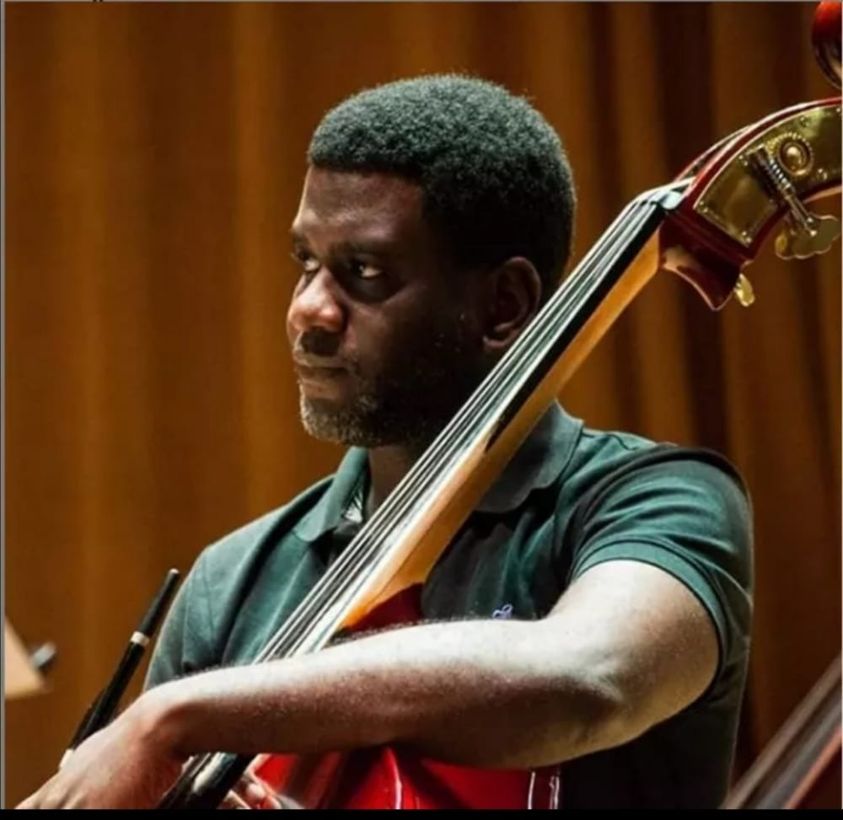



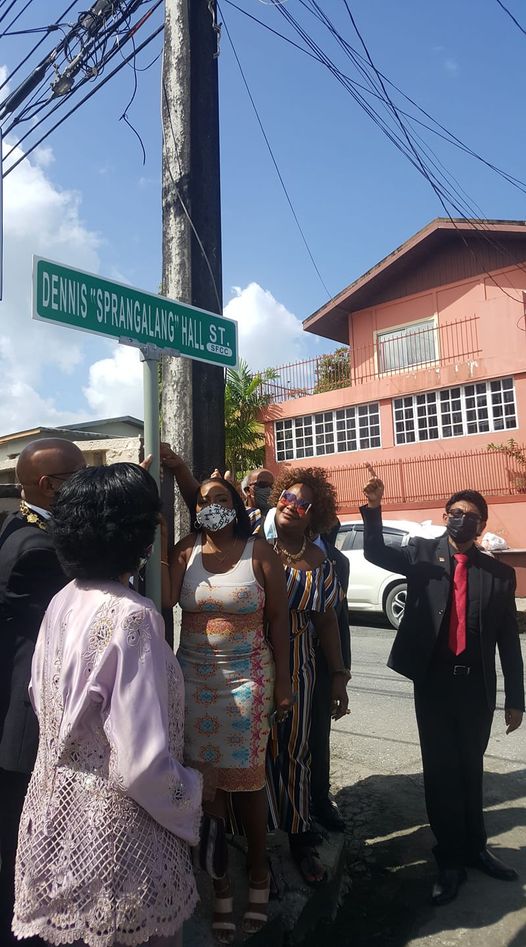
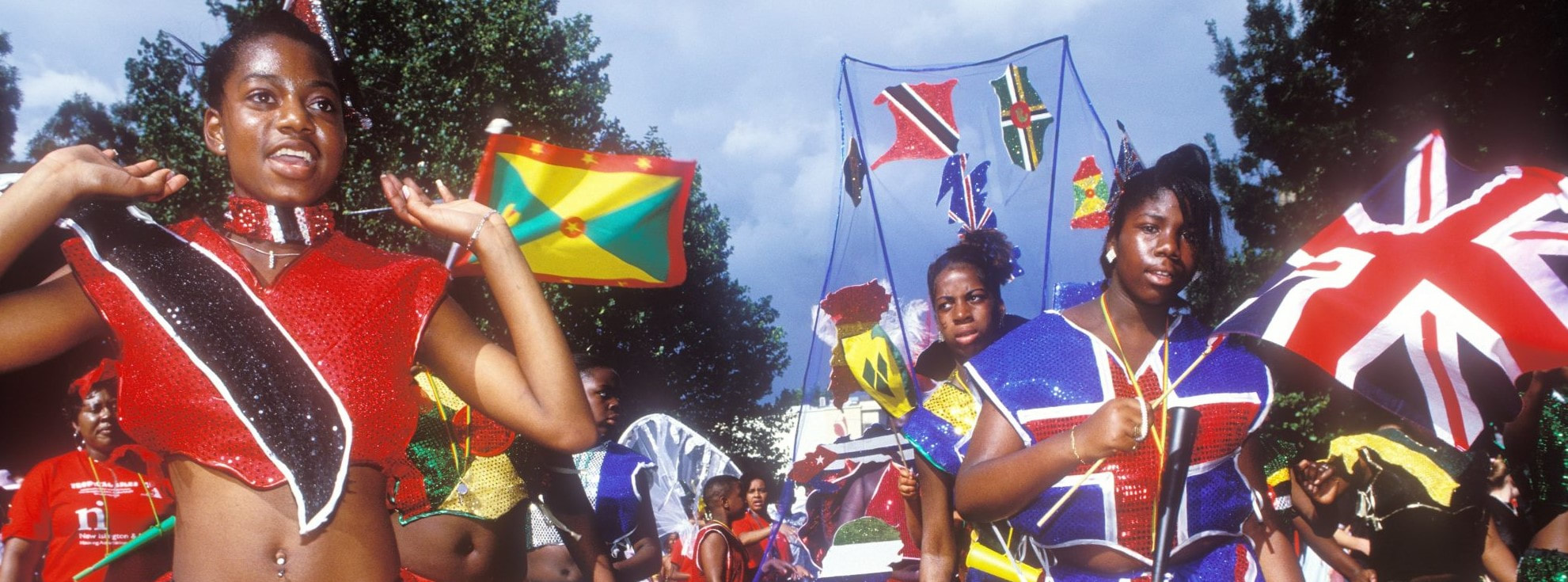

 RSS Feed
RSS Feed